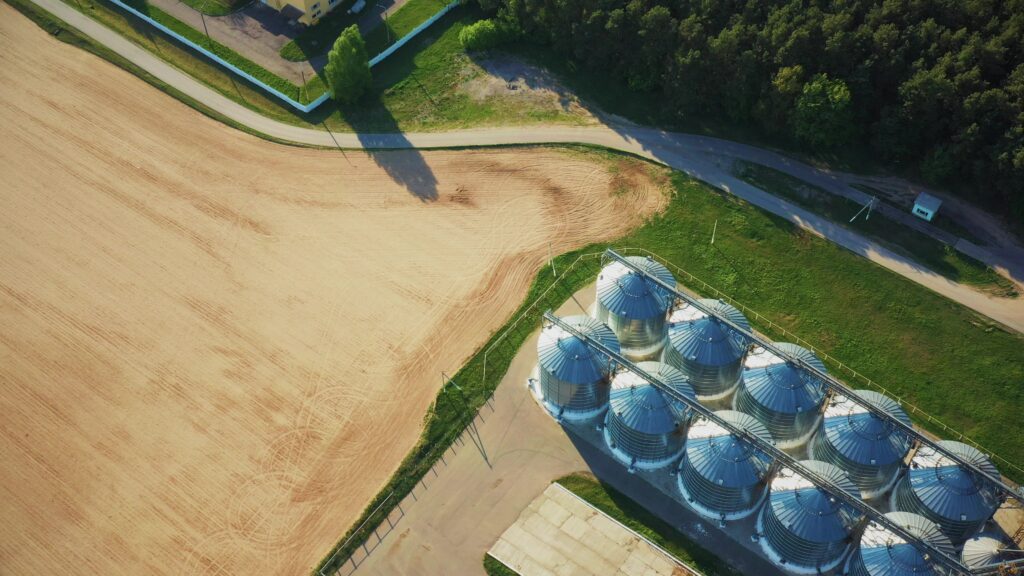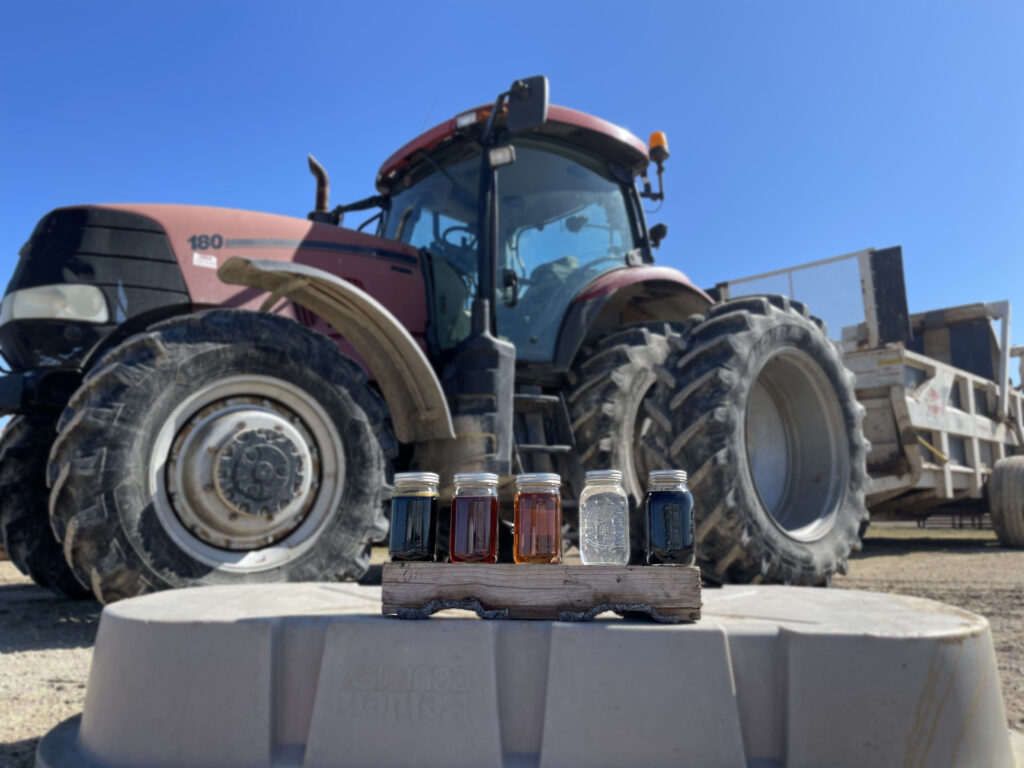The biogas industry plays a crucial role in the circular economy by efficiently managing waste, producing renewable energy, and enhancing soil fertility. Anaerobic digesters, in particular, are very important as they generate natural gas from food and agricultural wastes. The byproduct from anerobic digestion wastewater, digestate, is packed with nitrogen and phosphorus, making it ideal for plant growth. However, it does come with its challenges.
While beneficial for plant growth, too much of a good thing can be a bad thing. Digestate is often expensive to dispose of and challenging to treat. Without proper management, excess levels of these nutrients can cause severe environmental challenges, including water pollution and ecosystem harm. Addressing nitrogen, phosphorus, and ammonia issues within the digestate industry is crucial for maximizing its benefits while protecting the environment.
The Problem: Nitrogen and Phosphorus in Digestate
Nitrogen and phosphorus end up in digestate through the anaerobic digestion of organic materials like manure, crop residues, and food waste. While this process effectively treats agricultural and industrial waste, it also results in digestate containing high levels of nitrogen and phosphorus, which can cause environmental issues if not managed properly.

During anaerobic digestion, organic matter is converted into methane and carbon dioxide, while nutrients like ammonia and phosphate remain in the digestate. While beneficial for creating valuable fertilizer, excessive nitrogen and phosphorus can lead to water pollution, causing eutrophication, harmful algal blooms, and deterioration of aquatic ecosystems.
Strict regulations that govern nutrient levels and discharge limits for nitrogen into local water bodies make compliance a complicated issue.
Global Perspectives on Nitrogen and Phosphorus Management
Europe has recognized the environmental challenges due to high levels of nitrogen and phosphorus in digestate, particularly from agricultural and industrial sources. To address this, the European Union has implemented several directives and regulations like the Nitrates Directive (91/676/EEC), which promotes good farming practices and establishes nitrate vulnerable zones (NVZs) where strict measures must be applied. Another rule, the Water Framework Directive (2000/60/EC), aims to protect bodies of water by setting standards for nutrient levels, including nitrogen and phosphorus. These regulations require regular monitoring and reporting, pushing for the use of better technologies and practices to reduce nutrient pollution.
Many global digestate operations struggle to manage nitrogen and phosphorus because these nutrients are not evenly spread between the liquid and solid parts of the digestate. The liquid part often has high concentrations of nitrogen, while the solid part is rich in phosphorus. This uneven distribution complicates the recycling of these nutrients back into agriculture without causing environmental issues like water pollution and harmful algal blooms.
The Netherlands in particular is aiming to further tighten regulations by 2025. Within the Nitrates Directive, there is a ceiling of 170 kg of nitrogen per hectare (about 2.47 acres) in animal manure production. If needed and with the correct conditions, this limit can be exceeded.
For example, one condition is that the amount of phosphate excretion in animal manure must not be more than 150.7 million kg. In the September 2022 derogation decision, production ceilings were set by the European Commission as equal to amounts produced by livestock in the Netherlands in 2020.
In 2023, however, the derogation began to be phased out. By 2026, the Netherlands will no longer be granted any derogation. In 2025, the limits will be lowered to 440 million kg of nitrogen and 135 million kg of phosphate. To stay under these limits, nitrogen production needed to decrease by 6% and phosphate production by 7% over the course of 2023.
In the U.S., the Environmental Protection Agency (EPA) continues to strengthen regulations surrounding nutrient management in digestate, focusing on reducing ammonia emissions and improving nutrient recovery technologies. While regulations are becoming stricter, the EPA must balance promoting the use of digestate as a sustainable fertilizer with the promotion of innovative technologies to prevent nutrient pollution to prevent further environmental damage.
With emerging regulations worldwide that limit how much nitrogen and phosphorus can be applied to agricultural lands, advanced treatment and separation technologies are increasingly necessary to ensure compliance.
The Solution: Advanced Technologies for Nitrogen and Phosphorus Management
While some projects can rely on simple solutions such as land spreading raw digestate, the scale and complexity of larger endeavors often require more comprehensive strategies for digestate management.
Current and advanced technologies offer sustainable and innovative solutions to remove and recover these nutrients, reducing environmental risks and promoting sustainable agriculture. Traditional methods, such as biological treatment, are being supplemented and, in some cases, replaced by advanced technologies that are proving to be more efficient and environmentally friendly.
One of the most promising advancements in this field is the application of membrane technologies, which are redefining sustainable nutrient management.
Membrane technologies, including ultrafiltration, superfiltration, and reverse osmosis, play a key role in the efficient separation and concentration of nitrogen and phosphorus from digestate. These technologies offer precision in nutrient recovery, enabling the capture of valuable resources while minimizing waste.

Ultrafiltration, microfiltration, and superfiltration membranes can effectively remove suspended solids, while reverse osmosis membranes provide a higher level of purification by concentrating dissolved solids such as salts and ammonia. This advanced filtration process enhances the quality of recovered nutrients that can be captured and reused as fertilizers and feedstocks, creating additional revenue streams and reducing waste while offering excellent ROI. In addition to this, advanced filtration systems also reduce the overall environmental footprint of digestate processing.
Benefits of Nutrient Concentration
Concentrating organic nutrients from digestate has numerous benefits for agricultural practices and environmental management. By reducing the volume of the fertilizer, transportation and storage become easier and more cost-effective, allowing farmers to handle more nutrients with less hassle. The concentrate also allows for more precise application, ensuring that nutrients go exactly where they’re needed and in the appropriate quantities, which reduces the risk of nutrient runoff into nearby bodies of water. This helps prevent issues like eutrophication and harmful algal blooms. Concentrated nutrients can also be tailored to meet specific crop needs, improving soil health and promoting sustainable farming practices.
ZwitterCo’s Advance Membrane Technology
ZwitterCo’s membrane technology offers an innovative solution for the biogas industry, addressing several critical challenges with unmatched performance. Their superfiltration (SF) membranes stand out due to their ability to handle highly challenging streams with over 25,000 ppm chemical oxygen demand (COD) and total suspended solids (TSS), all while being immune to irreversible organic fouling.

Unlike standard membranes that require aggressive chemicals and extensive cleaning cycles, ZwitterCo SF membranes offer full performance recovery after quick and simple cleanings, lasting for years in streams that would ruin standard membranes in days. Additionally, ZwitterCo SF are the ideal pretreatment to RO due to their unique ability to remove harsh organics that would otherwise foul downstream technologies such as reverse osmosis. As a result, RO systems can run smoothly and concentrate ammonia with greater efficiency.
With ZwitterCo SF membranes, plant operators can drastically reduce the volume of digestate requiring treatment – enabling easier storage, lower hauling costs, and compliance with strict nutrient regulations.
Want to learn more about ZwitterCo membranes? Click here.
Adoption of advanced membrane technologies in this space is vital for mitigating nutrient runoff and staying compliant with the ever-changing and increasingly stringent regulations surrounding digestate management. By integrating these technologies, the biogas industry can better manage and recover nutrients, meet global sustainability goals, and support renewable energy and sustainable agriculture.

